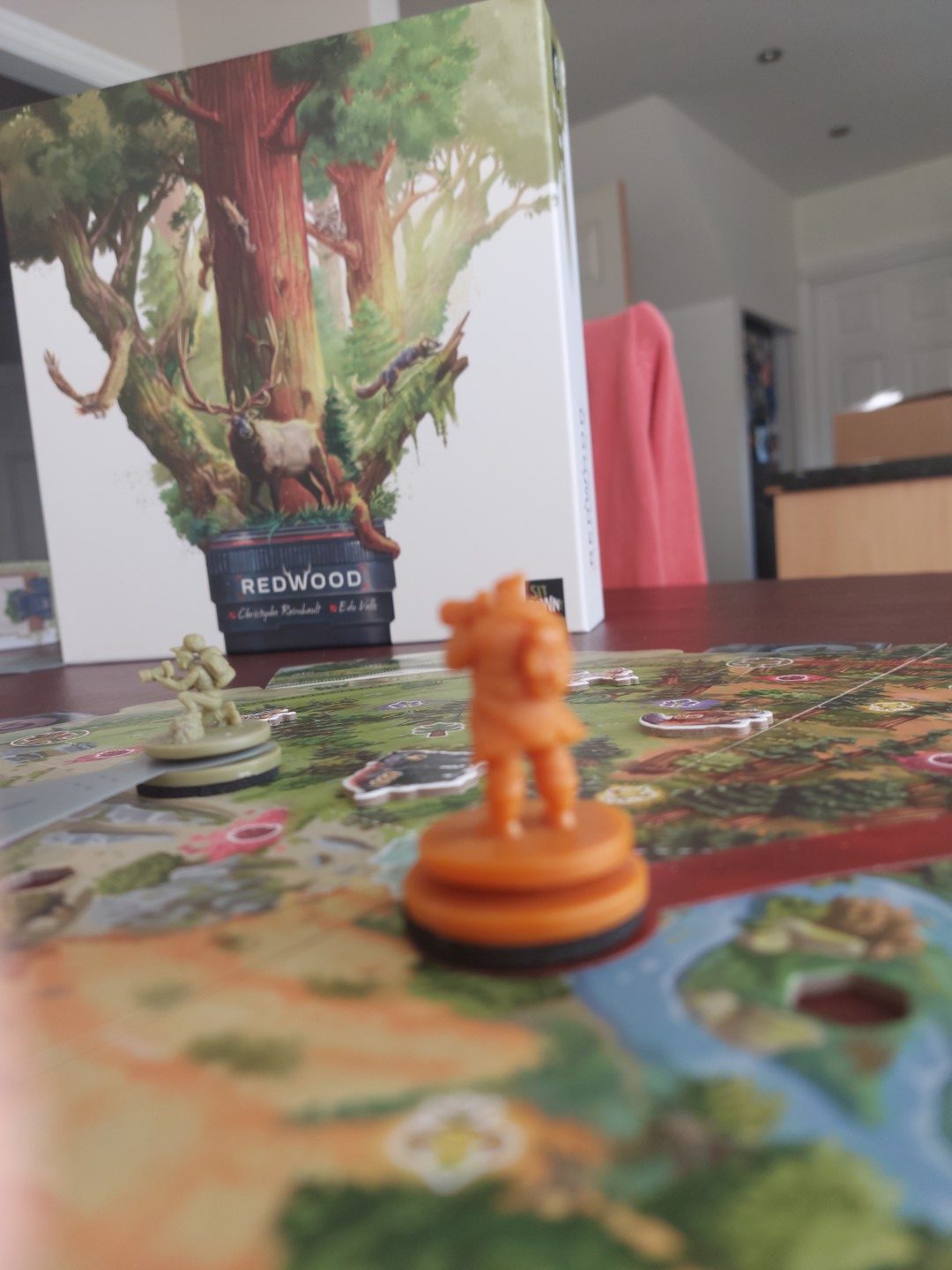Redwood sees you step into, well, the world of Redwood (The game doesn’t actually say, its just a landscape and natural habitats, so I’m assuming its the world of Redwood). Redwood is a board game that sees you become photographers amidst a vibrant and diverse ecosystem. However, despite its stunning artwork, Redwood may not resonate with everyone because of its reliance on movement templates.
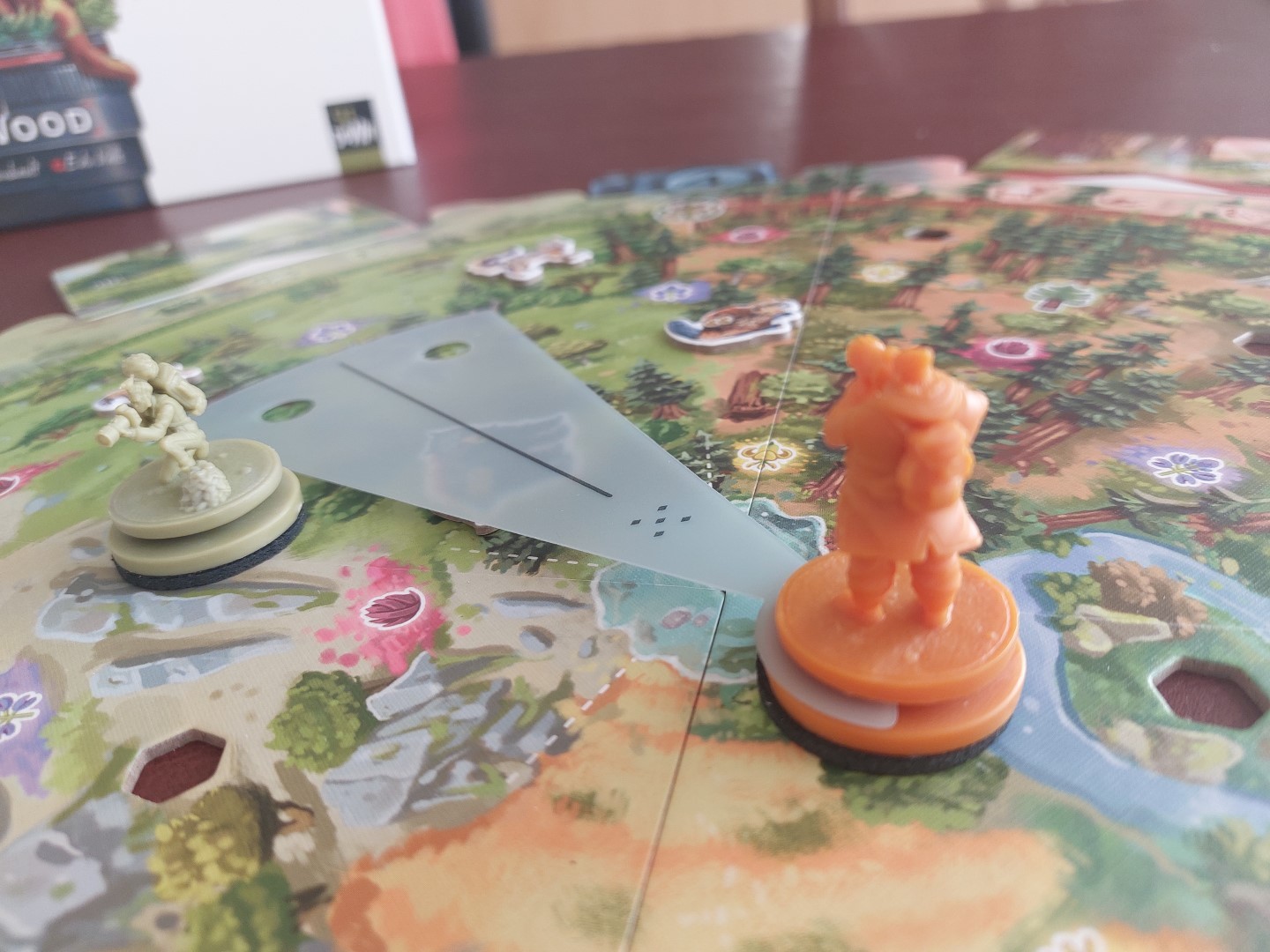
In Redwood, you play a photographer, taking photos, which is essentially resource management like, when you look at it through a mechanism lense. You’ll be navigating a landscape where you must harvest materials through taking photos to add them to your personal tableau of cards. You’ll need to take pictures of various animals, plants, the sun to complete panorama’s. There are objectives, but 5 rounds feels like it’s over before you know it. However, your gameplay enjoyment will be entirely contingent how much you like templates! You’ll use a template to move and template to take a photo.
Each turn works the same, you’ll choose templates (for moving and for the photo), move your photographer and then take the photo, you’ll gain the tokens for the things you’ve photographed, move animals around the board and that’s your turn!
Your turn starts but picking a template from either the general supply or from another player, if you take a template in front of another player they recieve a bonus. You’ll then clip the movement template to your photographer on the board and determine a path that’s clear of tokens. Once you’ve a clear path, You’ll then place your other photographer on the other end of the movement template. Hold the second one in place, and then remove the template and your other photographer. Then you’ll clip your photo template to your photographer on the board, trying to cover as many items as you can that you want to photograph. Determine which biome the axis of the photo points to, taking a panorama card, and a sun token (if applicable). Then placing the animals, plants and trees you photographed onto your new card. At this point, you check to see how many harmony tokens you take for meeting revealed objectives. There’s then some upkeep as you move animals you photographed. After 5 rounds, you’ll tally up points for different types of animals, connected panorama’s, sun tokens, animal tokens, flower tokens. The player with the most harmony points wins!
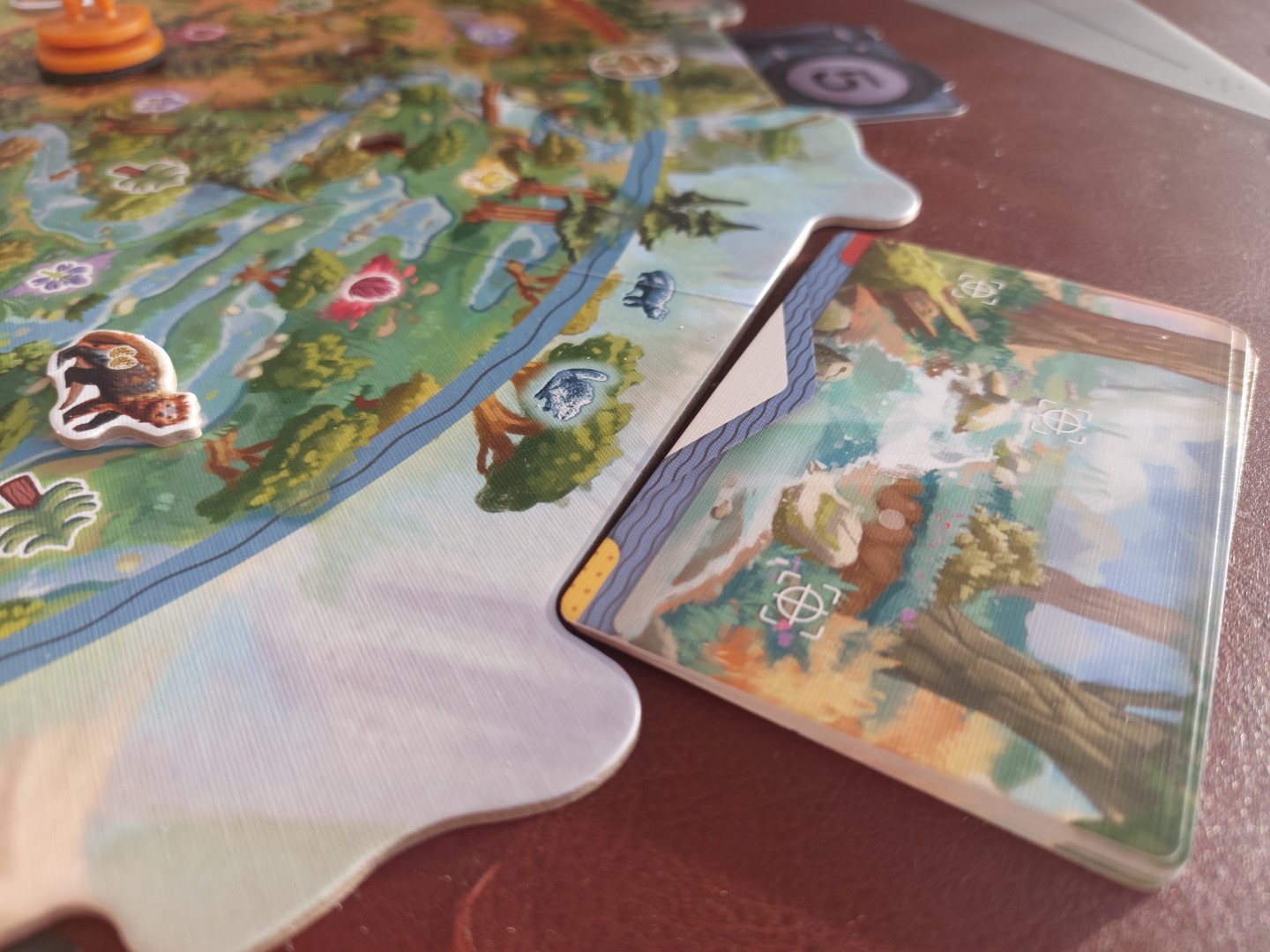
This reliance on templates is probably the make or break for this game, firstly there’s no picking up and trying templates. It’s grab and go, although if you grab a template that is in front of another player. They get a benefit, so you’ll never choose a template in front of someone. And despite its accessibility in terms of rules and ease of teaching, the gameplay quickly strays into what I feel like is repetitive territory. My biggest issue here is that there isn’t a different way to approach to play the game. Each game it’s the same move, get resources (animal, tree and flower tokens – add them to your panorama, repeat). And there’s no real variance or way to shake this up. Maybe this is a weird criticism, but by game 3, I was bored.
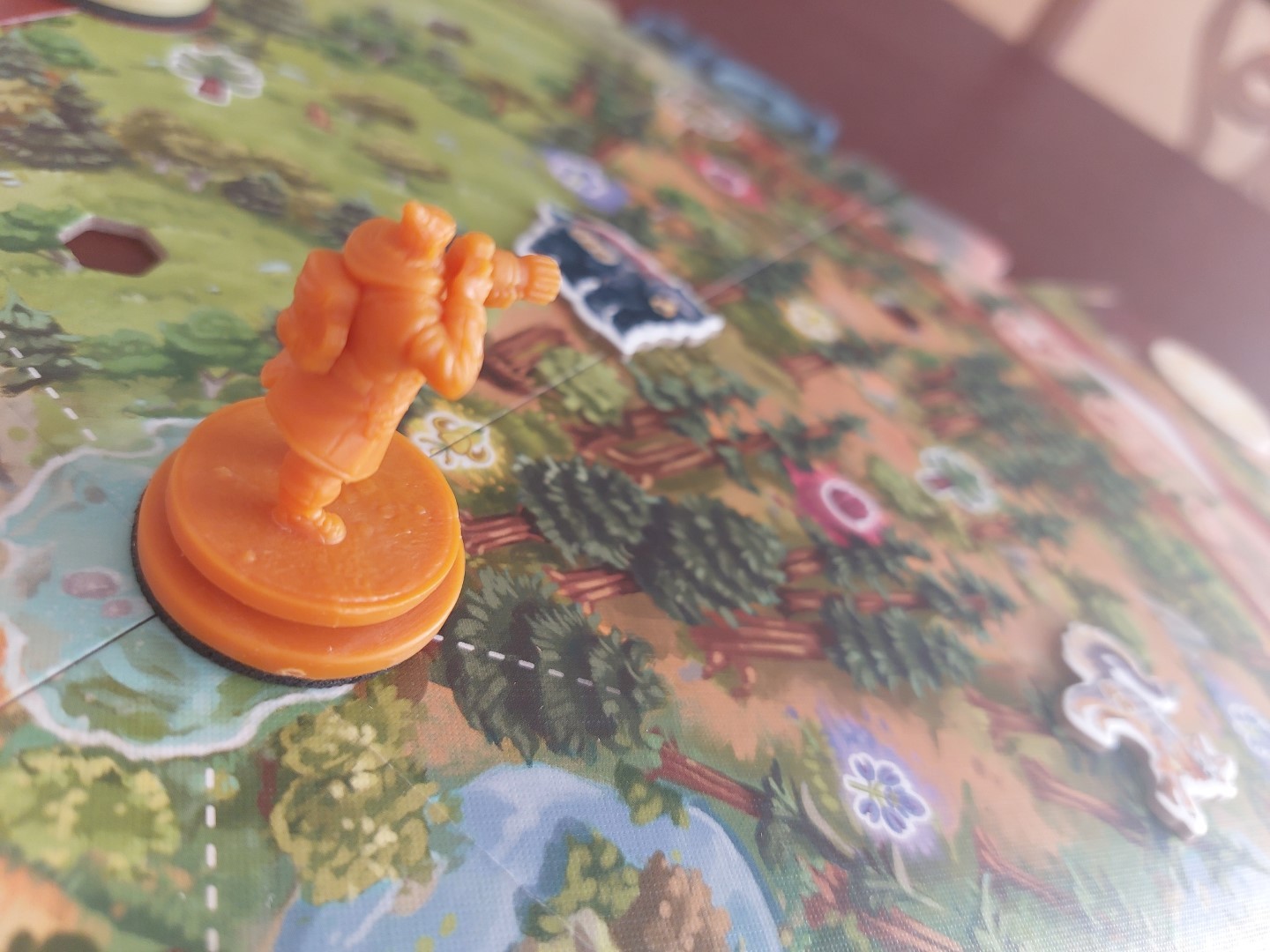
The movement template mechanism is a key feature, mechanism, or hindrance that’s reminiscent of Gaslands. Although it invites careful planning as players determine their moves using specific templates and almost adds an interesting layer of strategy, it can also feel a bit clunky at times due to the very potential imprecision of templates. The requirement to consider positioning in relation to other players and resources can introduce moments of frustration, especially for those who are not used to the imprecision of templates. Especially you can get into the debate of “that is or isn’t a legal move”. And that is probably my own personal issue. The restriction or imprecision of movement templates creates a sense of frustration, which detracts from the overall sense of player agency.
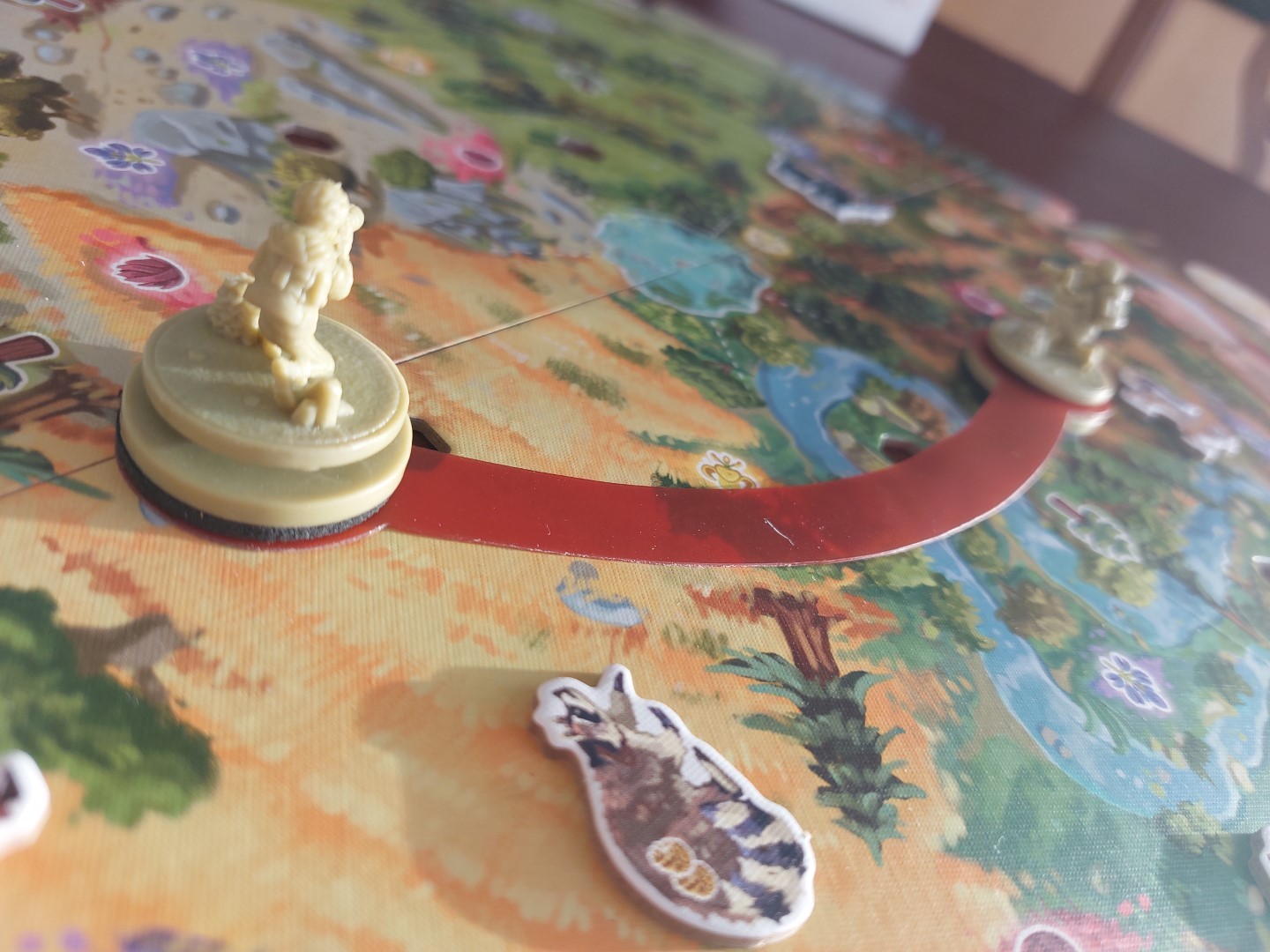
However, Redwood is undeniably beautiful. Each card and component captures the essence of the natural world with vibrant colours and intricate illustrations. The artwork transforms the game table into a picturesque forest, drawing players into its thematic embrace. When compared to Meadow, Redwood’s art is equally captivating, though Meadow offers a more whimsical, soft aesthetic that many find enchanting. Both games excel in creating beautiful landscapes, Redwood leans into a slightly more realistic portrayal of nature, which might appeal to different tastes. Meadow has a cartoonish drawn style.
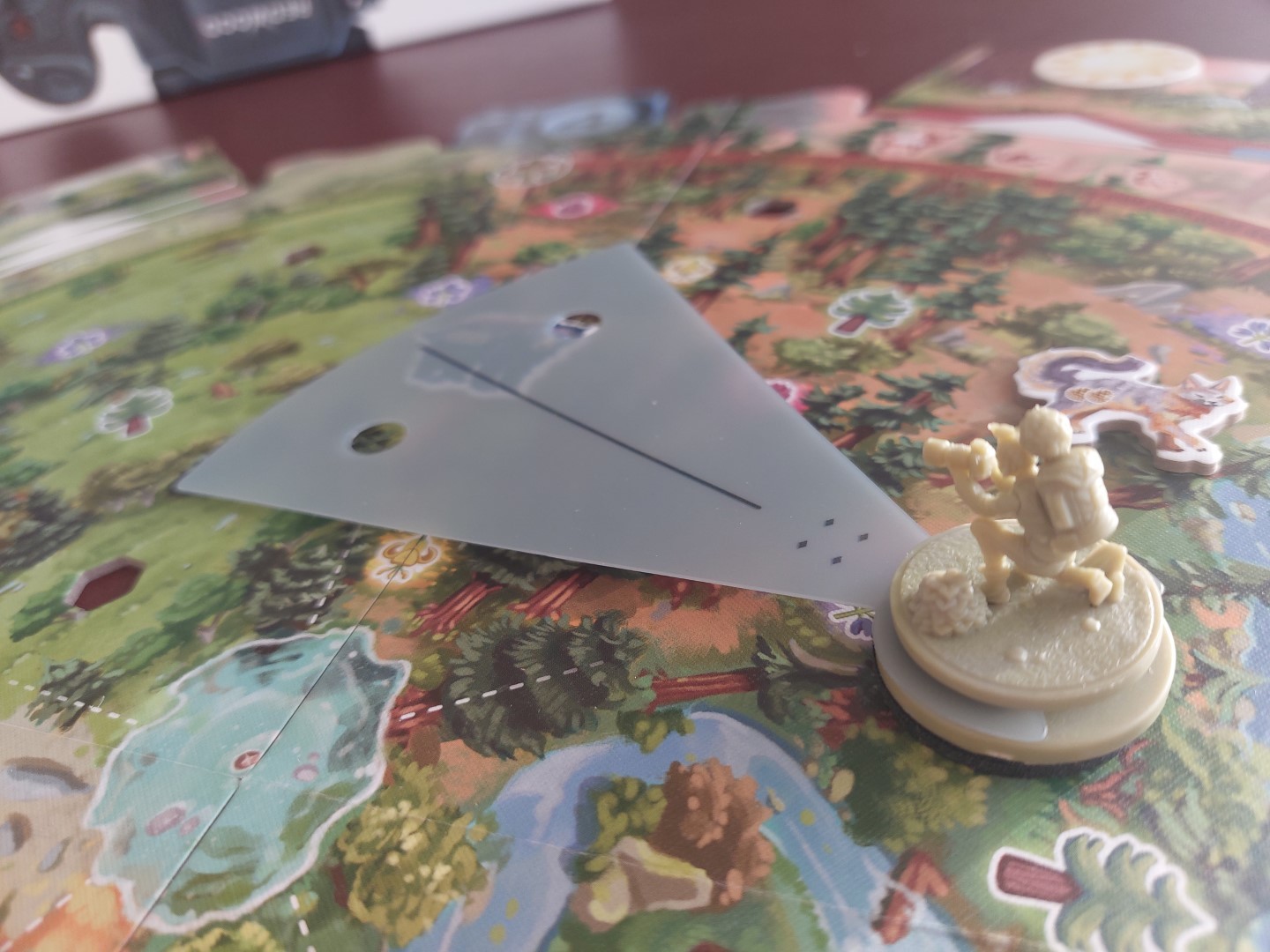
And despite its visual appeal, Redwood struggles to fully compensate for the occasional shortcomings, although that might just be my personal preference driven by the templates. The production quality is high, with components that feel great for a retail edition. And I’ve heard that the kickstarter edition is almost excessive.
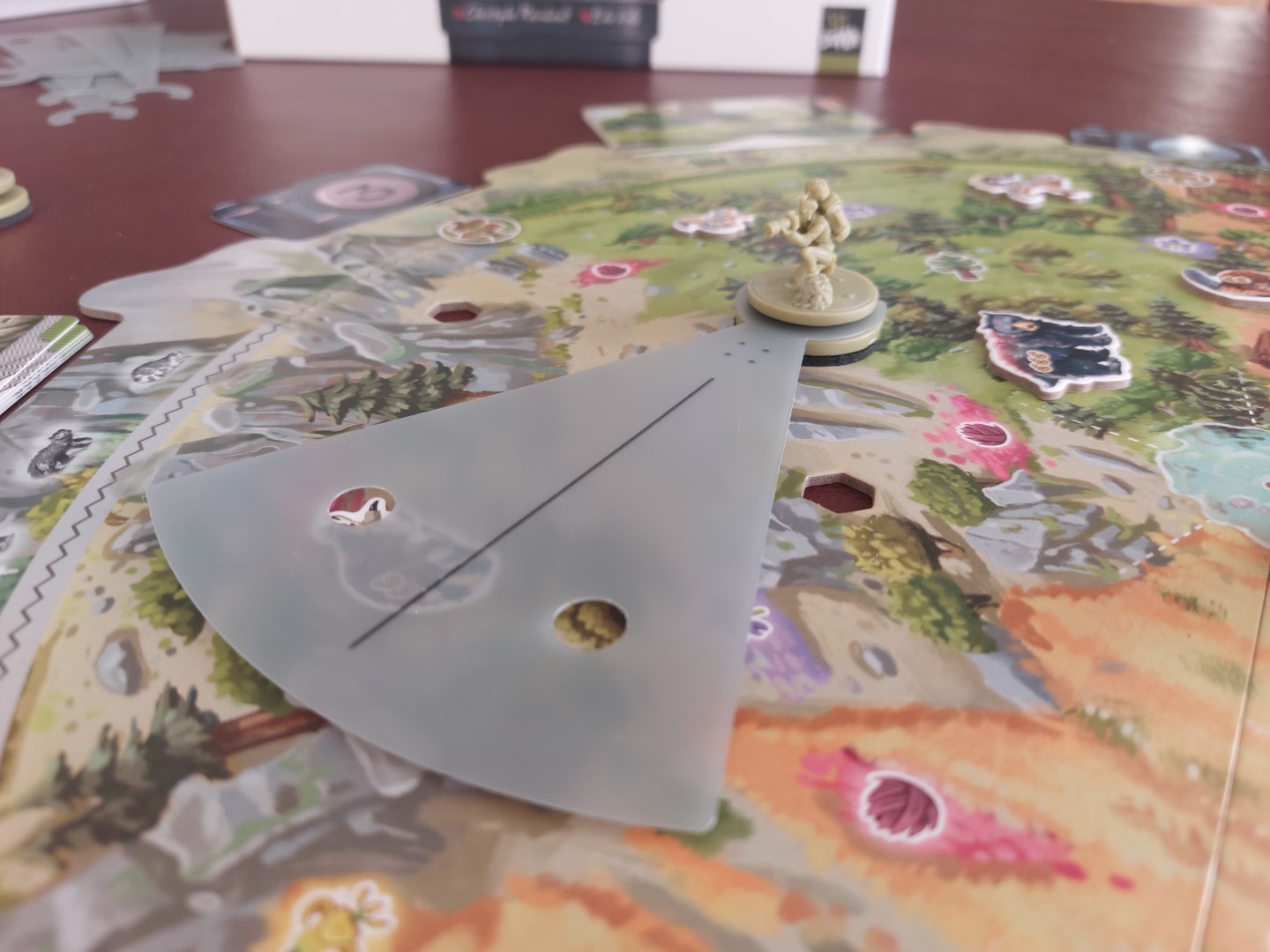
Overall, I felt like Redwood was a game that just comes close to hitting the right notes, the game has an air of simplicity to it, that puts it in the same grouping as say Flammecraft, it’s enjoyable, it’s easy to teach. However, it lacks a sense of replayability and I can’t really explain why, maybe it’s just because it feels a bit boring(?). Although that reliance on movement templates won’t be for everyone.
.
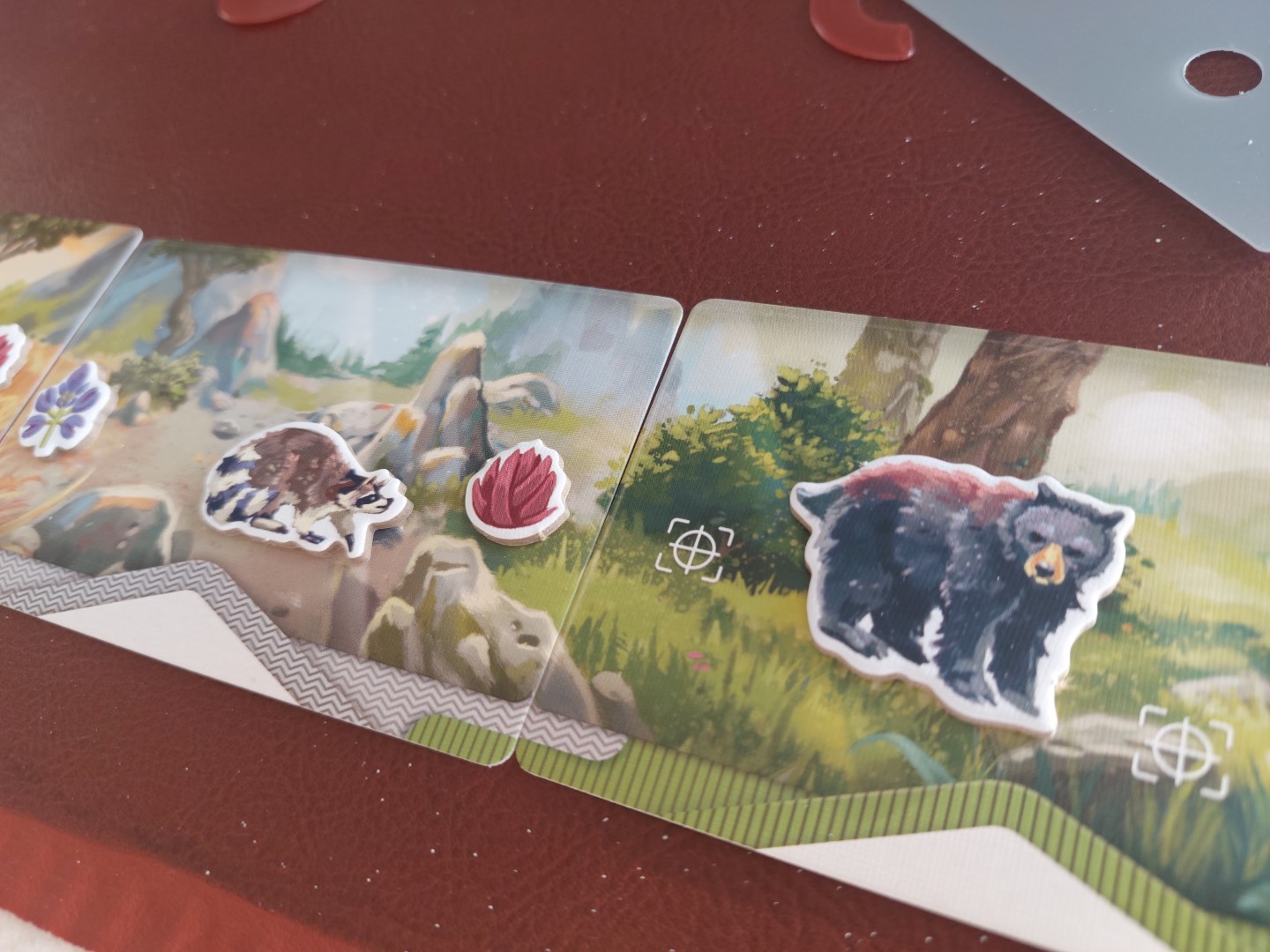
As you know, I rate games on a scale of:
Buy or play
Wait for sale or play if you like game XYZ
Avoid
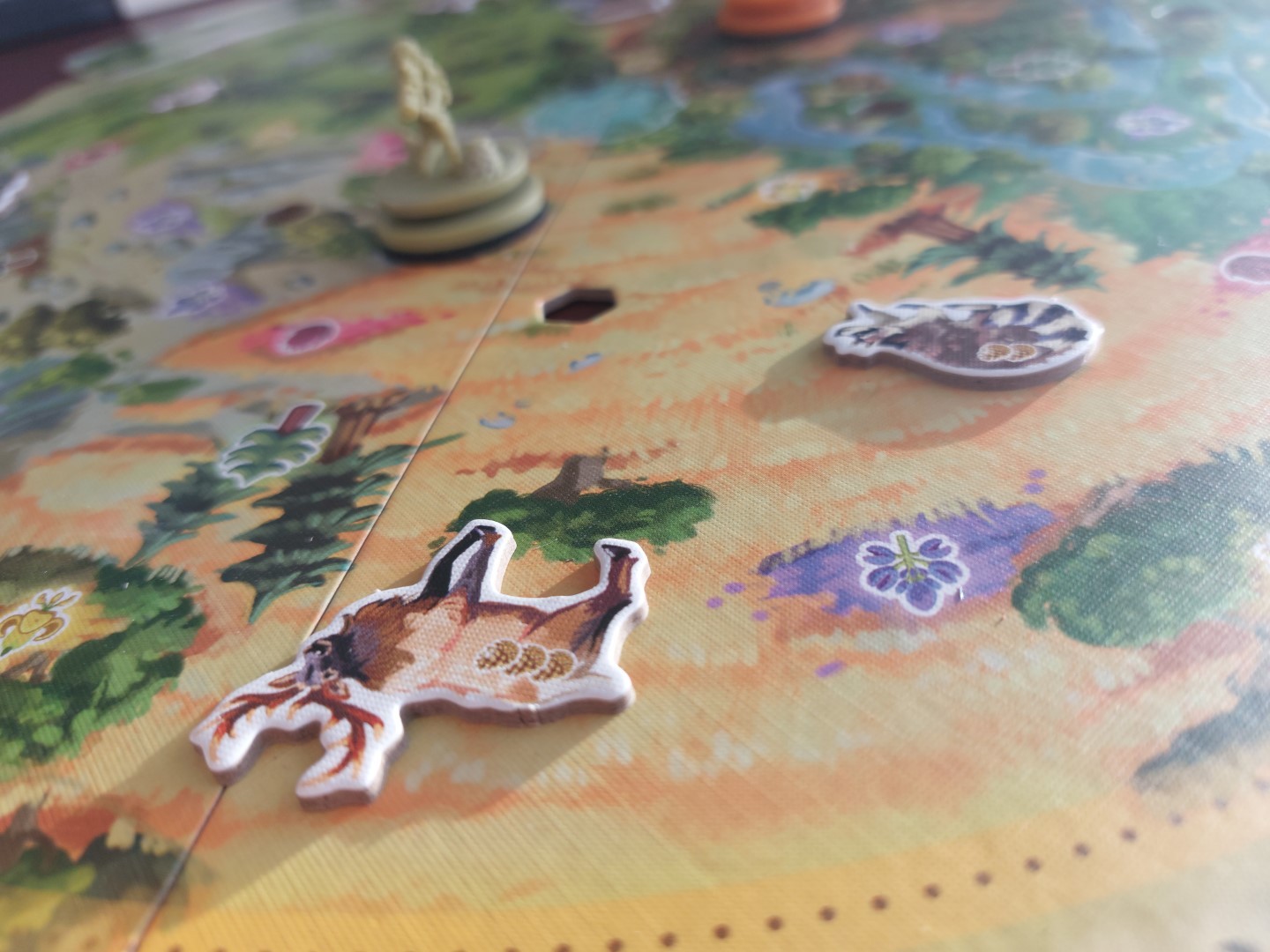
Redwood could be an addition to your collection if you’re looking for a new addition that’s easy to teach, rules light, looks great and there’s always going to be an appeal for a game that looks this good. However, there’s a real risk here that the novelty-like effect of the templates could quickly fade and I think Redwood earns itself a “Wait for Sale or play” recommendation. It’s hard to make a comparison, its not for example like Meadow, apart from the theme, however, this could fit into a collection of Ticket to Ride, Splendor, Flammecraft. Redwood will fit perfectly into that collection, however, for me there’s a lack of engaging gameplay that gets bogged down (depending on the players) in the imprecision of the templates and the lack of gameplay variety.
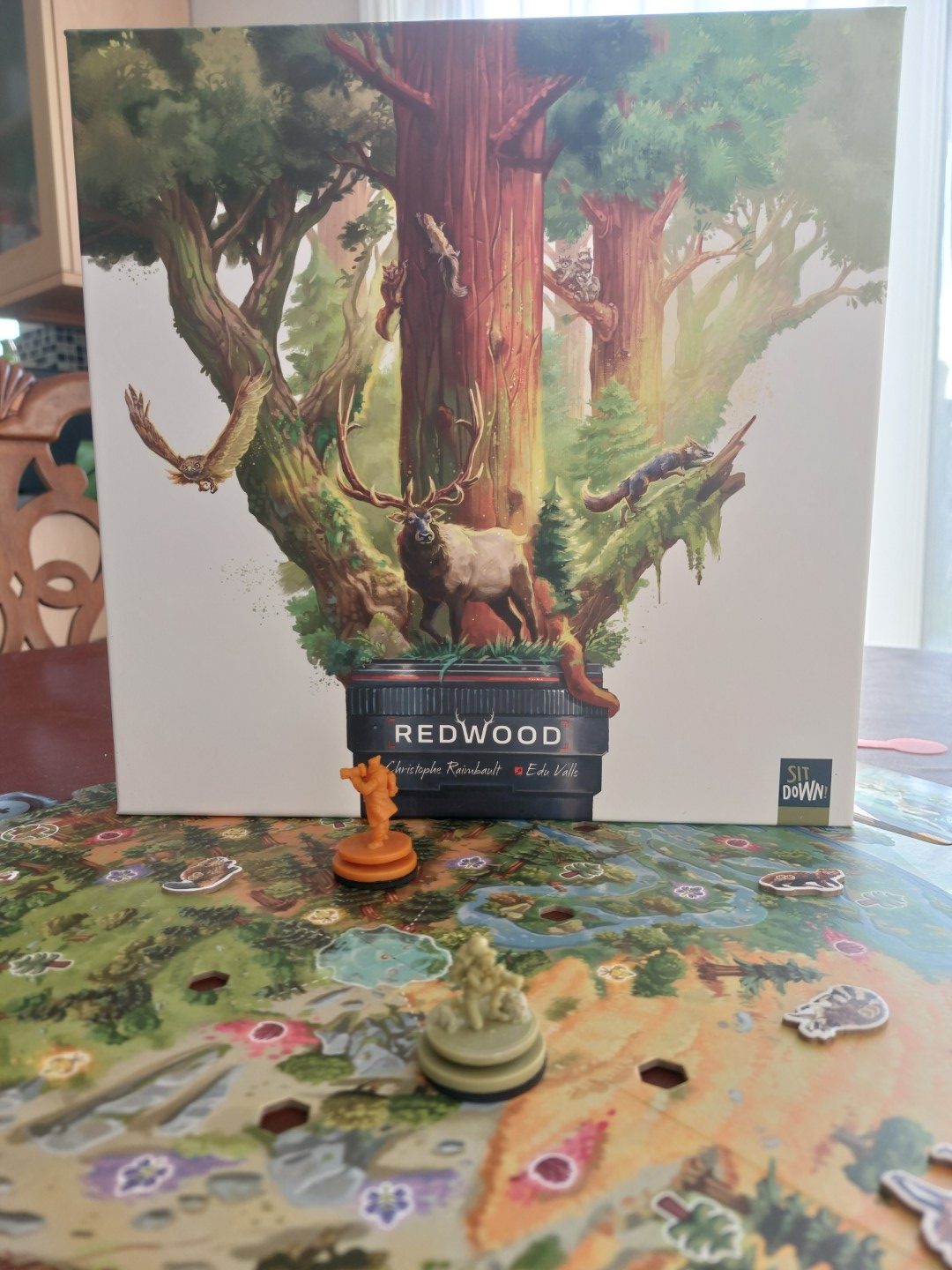
For those interested in exploring Redwood, it’s available for purchase on the Kienda website: https://kienda.com/products/redwood-board-game).

